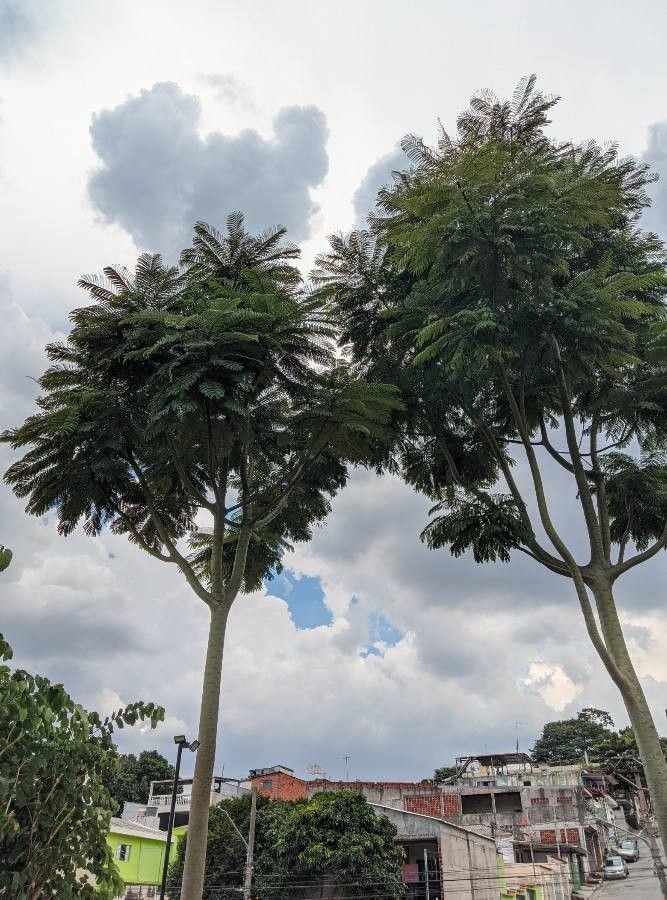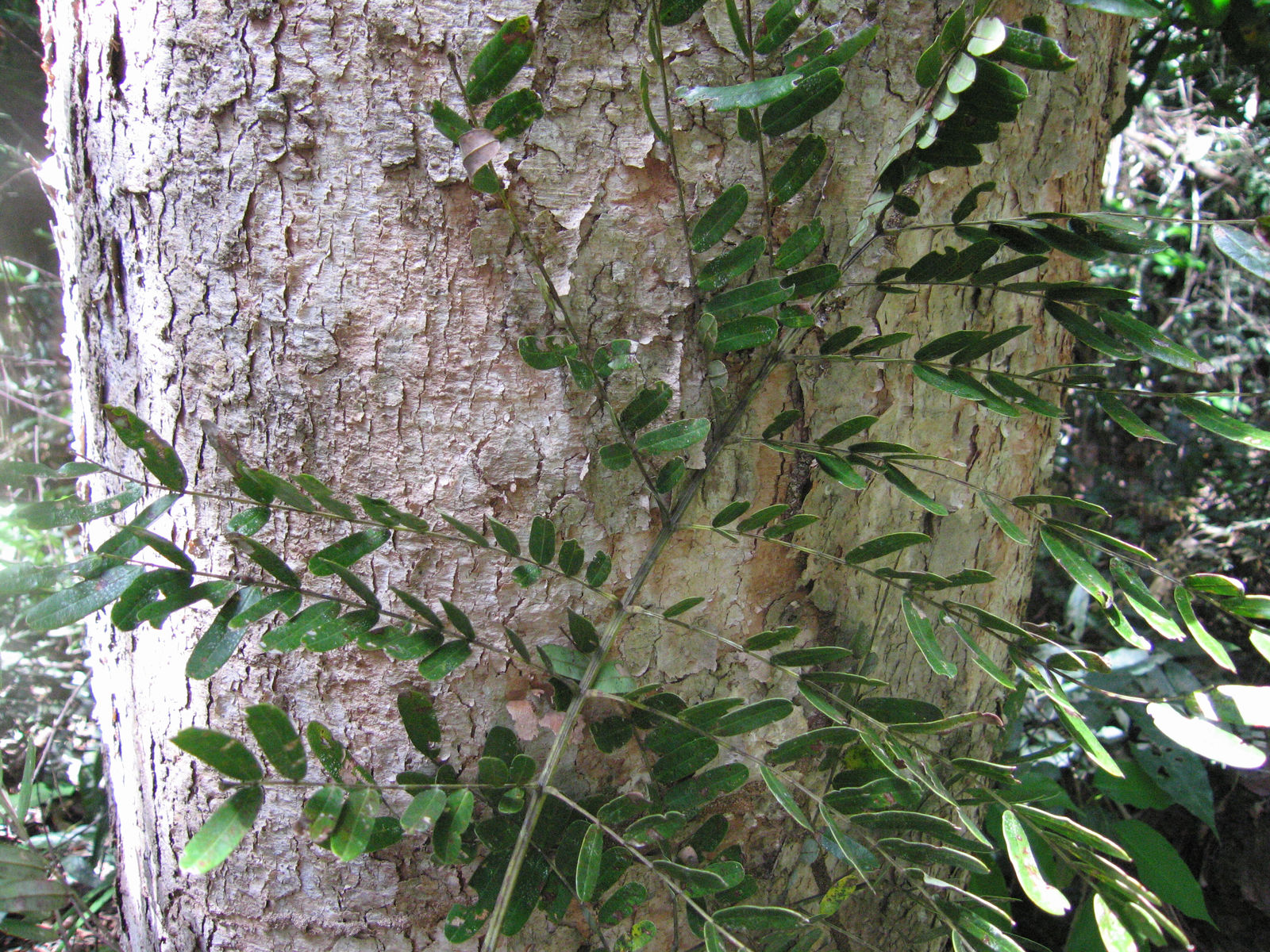Guapuruvu
schizolobium parahyba
Also known as: ["Feijó","Paricá","Guapuruvu"]
Overview
A fast-growing, large deciduous tree native to South America, known for its striking yellow flowers and valuable timber.
Benefits & Perks
["fast growing","fragrant flowers","wildlife attractant (bees, butterflies, birds)","drought tolerant"]
Botanical Classification
| Phylum: | Magnoliophyta |
| Class: | Magnoliopsida |
| Order: | Fabales |
| Family: | Fabaceae |
| Genus: | Schizolobium |
| Botanical Name: | Schizolobium parahyba |
Plant Characteristics
Basic Information
- Category: Trees
- Suitable Location: outdoor garden in tropical or subtropical regions
- Suitable For:
- Is Weed: No
- Allergenicity: low
Environmental Needs
- Climate: {"temperatureRange":"15–35°C"}
- Hardiness: {"zones":"9–11"}
- Misting: rarely required, only if ambient humidity is very low
- Drainage: Fast-draining to prevent waterlogging.
- Soil Type: Well-draining, fertile soil with organic matter; cactus mix or loam-based potting soil.
Maintenance Level
- Maintenance Level: moderate
- Toughness Level: high
- Pruning Frequency: Annually in late winter or early spring before new growth begins.
- Pruning Intensity: Moderate; remove up to one-third of the oldest stems if needed.
Care Details
Ideal Sunlight Coverage:
Full sun (6–8 hours direct sunlight daily); tolerates partial shade but may grow less vigorously.
Sunlight Tolerance Tips:
Acclimate gradually if moving from shade to sun; protect from intense midday sun in hot climates; ensure outdoor placement receives ample light.
Care Requirements
Care Difficulty
moderatemoderate
Sunlight
full sun
Rotate plant for even growth; use sheer curtains to filter harsh sun; avoid sudden light changes.
Watering
every 7–10 days during active growth, reduce in winter
Water thoroughly until runoff, allow soil to dry partially between waterings, avoid wetting foliage.
Soil
well-draining, fertile loam
pH: Slightly acidic to neutral (pH 6.0–7.0).
Use a mix with good drainage, avoid heavy clay soils, ensure pH is within preferred range.
Temperature
Thrives in warm conditions (65–85°F / 18–29°C); prefers stable temperatures, sensitive to frost.
Protect from frost, maintain warmth in winter, avoid sudden temperature swings.
Fertilizing
every 2–3 months during growing season with balanced fertilizer
Apply fertilizer after watering, flush soil occasionally to prevent salt buildup, stop feeding in fall.
Propagation
Methods
Stem cuttings or seeds; stem cuttings are more common for home growers.
Step-by-Step Propagation Guide
- Take a 4–6 inch cutting, remove lower leaves, apply rooting hormone, plant in medium, maintain humidity, keep warm.
Best Time: Spring or early summer when the plant is actively growing.
Environment
High humidity (70–90%), warm temperatures (75–85°F / 24–29°C), indirect light.
Medium
Well-draining mix of peat, perlite, and sand or cactus mix.
Hormone
Recommended to use rooting hormone for faster root development.
Timeline
Roots may develop in 4–8 weeks; establishment takes 3–6 months.
Tools Needed
Pruning shears, rooting hormone, propagation tray, plastic wrap or dome, misting bottle.
Quick Tips
Use healthy, non-flowering stems; keep soil consistently moist but not waterlogged; provide bottom heat if possible.
Pruning & Repotting
Pruning Guide
Method
Selective thinning, heading back, and shaping cuts to maintain form.
Pruning Plan
Shape the plant, encourage bushier growth, remove dead or diseased wood, maintain size.
Tools
Pruning shears, loppers (for larger branches), sterilizing solution.
Checklist
Sterilize tools, prune during dormancy, make clean cuts, dispose of clippings properly.
Repotting Guide
Best Season
Early spring before active growth starts.
Pot Size
Choose a pot 1–2 inches larger in diameter than the current one.
Method
Remove plant gently, trim roots if necessary, place in new pot with fresh soil, water lightly.
Suggestions
Repot every 2–3 years or when roots fill the pot; necessary to refresh soil and provide space.
Checklist
Prepare new pot, trim roots if crowded, use fresh soil mix, water after repotting.
Advanced Care Tips
Watering Mastery
Watering Checklist
Check soil moisture, water thoroughly, ensure drainage, avoid leaf wetting.
How to Apply Water Properly
Water directly at the root zone, apply until water drains from the bottom, ensure excess water exits the pot, water in the morning to reduce evaporation.
Watering Schedule Tips
Water deeply once the top inch of soil feels dry; reduce frequency in winter to prevent root rot.
Soil Improvement
Add perlite or sand for drainage, incorporate compost for fertility, ensure aeration with coarse materials.
Temperature Stress Management
Signs of Temperature Issues
Leaf drop, stunted growth, yellowing leaves, bud failure.
Cold Stress
Growth halts, leaves may wilt or discolor, risk of frost damage or death in prolonged cold.
Solution: Move to a warmer location, provide frost protection, avoid cold drafts, reduce watering.
Hot Stress
Wilting, leaf scorch, reduced growth, potential for heat stress in extreme temperatures.
Solution: Provide shade during peak heat, increase humidity, water more frequently, ensure good air circulation.
Fertilizing Guide
Fertilizing Checklist
Check season, dilute fertilizer, apply to moist soil, avoid contact with roots.
Fertilizing Method
Use balanced liquid fertilizer diluted to half strength every 4–6 weeks during growing season (spring/summer); avoid fertilizing in winter.
Common Problems & Solutions
Toxicity Warning
Cats
Slightly ToxicCats may experience mild gastrointestinal upset and allergic reactions if they ingest parts of Schizolobium parahyba, particularly the seeds and bark. The effects are typically not severe but should be monitored.
⚠️ Symptoms:
🌿 Toxic Parts:
⚡ Toxic If:
if eaten
Dogs
Slightly ToxicIn dogs, ingestion of Schizolobium parahyba seeds and bark can lead to mild gastrointestinal upset and allergic reactions. The toxicity is generally not life-threatening but can cause discomfort.
⚠️ Symptoms:
🌿 Toxic Parts:
⚡ Toxic If:
if eaten
Humans
Slightly ToxicSchizolobium parahyba contains compounds that can cause mild gastrointestinal distress and allergic reactions in humans. The seeds and bark are the most toxic parts due to their higher concentration of these compounds.
⚠️ Symptoms:
🌿 Toxic Parts:
⚡ Toxic If:
if eaten
Frequently Asked Questions
Q: Is Schizolobium parahyba suitable for small gardens?
A: No, due to its large size, it is best suited for spacious outdoor landscapes.
Q: Does this tree attract wildlife?
A: Yes, it is known to attract bees, butterflies, and birds with its flowers.
Q: Is the wood of Schizolobium parahyba valuable?
A: Yes, the timber is highly valued for construction and furniture making.
Quick Reference
| Family: | Fabaceae |
| Care: | moderate |
| Light: | full sun |
| Water: | every 7–10 days during activ |
Get Expert Care Tips
Download the Plantious app for personalized care reminders and plant identification!
Google Play App Store








